|
This is an attempt from us to find the most advanced destroyer in the world. It’s a pretty difficult task to find the best ones. The rankings based on the technology incorporated and the effectiveness in different war scenarios. What’s a destroyer? Destroyers are warships that provide multi-mission offensive and defensive capabilities. Destroyers can operate independently or as part of carrier strike groups, surface action groups, amphibious ready groups, and underway replenishment groups. Many are equipped to carry out anti-submarine, anti-air, and anti-surface operations. The NATO standard designation for these vessels is DDG. Nations vary in their use of destroyer D designation in their hull pennant numbering, either prefixing, or dropping it altogether. Destroyers are among the widely used ships in the world due to their wide range of use. Their combination of high firepower and high endurance make them ideal for war, escort and (other) peace-keeping operations. The name “Destroyer” comes from the Russo-Japanese war in the early 20th century where they were named “Torpedo boat destroyer”. Today they are the heaviest surface combatants after the cruiser. 10) Sovremennyy-class destroyer Sovremennyy-class destroyer is the principal anti-surface warship of the Russia. The primary role of this guided missile destroyer is to attack enemy warships but these ships also has anti-aircraft, anti-submarine and coastal bombardment capability. The ships, with a maximum displacement of 8,480 tons are similar in size to the US Navy's Aegis-equipped missile cruisers, and are armed with an anti-submarine helicopter, 48 air defense missiles, 8 anti-ship missiles, torpedoes, mines, long range guns and a comprehensive electronic warfare system. The ship's propulsion system is based on two steam turbine engines each producing 50,000 horsepower together with four high pressure boilers. The ship's maximum speed is just under 33 knots. At a fuel-economic speed of 18 knots the range is 3,920 miles. The endurance is 30 days. The ship is equipped with the Moskit anti-ship missile system with two quadruple launchers installed port and starboard of the forward island and set at an angle about 15 degrees to the horizontal. The ship carries a total of eight Moskit 3M80E missiles. The air defense system is the Shtil surface to air missile. Two Shtil missile systems are installed, each on the raised deck behind the two-barreled 130 mm guns fore and aft of the two islands. The ships are further equipped with AK-130-MR-184 130 mm guns and four six-barrel AK- 630 artillery systems for defense. Anti-submarine defense is provided by two double 533 mm torpedo tubes installed port and starboard, and two six-barrel anti-submarine rocket launchers, RBU-1000, with 48 rockets, and a Ka-27 helicopter. The later ships are upgraded with P- 800 "Onyx" missiles in TOS SM-403 launchers air defense system with "Hurricane, Tornado," with nearly three times the range of former "Hurricane" SAM. 9) Hobert Class (Australia) Hobart class ship is an air warfare destroyers (AWDs) being built for the Royal Australian Navy. These destroyers will have a length of 147.2 m with beam of 18.6 m and a draught of 5.17 m. The ships will have a full load displacement of 6,250 tones (6,150 long tons; 6,890 short tons).it have been designed to allow for upgrades and installation of new equipment, with a theoretical maximum displacement of 7,000 tones (6,900 long tons; 7,700 short tons). Each ship's main weapon is a 48-cell Mark 41 Vertical Launch System. The cells are capable of firing the RIM-66 Standard 2 antiaircraft missile or the quad-packed RIM-162 Evolved Sea Sparrow point-defense missile. Hobart's are likely to be equipped to accommodate the standard 6 anti-aircraft missiles and the Tomahawk cruise missile in future. The Hobarts will each initially carry a single S-70B-2 Seahawk helicopter. The helicopter will be replaced by the MH-60 Romeo version of the Seahawk once it enters RAN service. Two rigid hulled inflatable boats are also carried Hobarts will use AEGIS as the combat management system. The system has been 'Australianised' to be more capable in regards to non-aviation threats. Hobarts also use Australian Tactical Interface; it has six multi-function consoles that are capable of handling the destroyer's sonar, electronic warfare, and close-defense functions in addition to Aegis. The main radar system is the Raytheon AN/SPY-1D(V) S-band radar. The combination of the AN/SPY-1D(V) radar, Aegis system, and Standard 2 missile will allow each destroyer to fire on enemy aircraft or missiles up to 95 miles away. These combat systems, together, will be amongst the most advanced maritime warfare capabilities available and ensure that the Hobart Class has unprecedented levels of interoperability with Australia’s allies, particularly the United States Navy. Electronic warfare sensors consist of the ITT EDO Reconnaissance and Surveillance Systems ES-3701 electronic support measures (ESM) radar, a SwRI MBS-567A communications ESM system, an Ultra Electronics Avalon Systems multipurpose digital receiver, and a Jenkins Engineering. Defense Systems low-band receiver. Countermeasures include four launchers for Nulka decoy missiles, plus four six-tube launchers for radio frequency, infrared, and underwater acoustic decoys. Hobarts will use combined diesel or gas turbine (CODOG) propulsion arrangement consists of two General Electric Marine model 7LM2500-SA-MLG38 gas turbines, each generating 23,500 hp, and two Caterpillar Bravo 16 V diesel engines, each providing 7,580 hp. For in-harbor maneuvering, each destroyer is fitted with a bow thruster. The ships' maximum speed is 28+ knots, with a range of 5,000+ nautical miles at 18 knots 8) Horizon Class (France/Italy) Horizon class is an air-defense destroyer in service with the French Navy and Italian Navy. In Italy the class is known as the Orizzonte-class. The ship is configured for rapid deployment and extended range and endurance and can carry sufficient fuel, water and stores for an endurance of 45 days at sea between replenishments. The ship can attain a speed of 29kt and, at a cruising speed of 18kt, has a range of over 7,000nm. The command and control system has been developed by Eurosysnav, a joint venture company set up by Armaris and Finmeccanica, and is based on the Senit 8 combat data system. Alenia Marconi Systems, now Selex Sistemi Integrati, supplies the data transfer system (DTS). NICCO Communications SAS, a joint venture between Thales Communications and Marconi Mobile SpA, developed the fully integrated communications system. The communications suite includes two link 11 and one link 16 high-capacity digital information distribution systems. Selex and Sagem supplied the integrated navigation system. The Selex NA 25 provides fire control for the 76mm guns. The ships are also equipped with the SAGEM Vampire MB infrared search and track system (IRST). Horizon class is armed with the PAAMS principal anti-air missile system. PAAMS is a tri-national programme involving France, Italy and the UK. The DCNS Sylver A50 vertical launch system within PAAMS, installed immediately forward of the two guns towards the bow deck, has 48 cells for both the Aster 15 and Aster 30 missiles. The Aster missile carries an inertial computer with datalink and an active J band Doppler radar seeker. Aster 30 has a range of 100km, Aster 15 a range of 30km. The missile has manoeuvrability of up to 62g, achieved through the use of the PIF/PAF guidance system. The ship has two twin torpedo launchers for Eurotorp Mu 90 lightweight torpedoes. Mu 90 has a directed energy warhead and a range of 12,000m at maximum speed and 25,000m at minimum speed. Electronic Warfare The electronic warfare suite is developed by the Sigen Consortium and characterised by the latest generation of radar ESM (electronic support measures) and ECM (electronic countermeasures) architectures and implementation of new digital and microwave technologies. The radar ESM component features very high sensitivity, very high accuracy direction finding and broadband digital receivers. The radar ECM component is based on phased array solid-state technology and features high specific transmitted power, fast reaction, multi-threats engagement capability and complete programmability of coherent and not coherent jamming techniques, due to the implementation of multiple broadband digital radio frequency memory (DRFM). Horizon is equipped with a SLAT torpedo defense system which is also installed on the French and Italian aircraft carriers. Sensors It uses the EMPAR multifunction active electronically scanned array radar as primary sensor. It operating at G-band (4GHz to 6GHz), is mounted at the top of the forward mast. The Thales / Selex S1850M air and surface search radar, operating at D-band (1GHz to 2GHz) is mounted at the top of the aft mast. The Selex RASS surface search radar, covering E and F bands (2GHz to 3GHz, and 3GHz to 4GHz), is mounted on the forward face of the mast. The Selex SPN 753(V)4 navigation radar operates at I-band from 8GHz to 10GHz. Selex also provides the SIR-R/S interrogation friend or foe (IFF) system. Thales Underwater Systems and WASS were awarded the contract to supply the hull-mounted TMS 4110CL sonar which operates at medium frequency in active search and attack mode. TMS 4110CL uses a cylindrical array and advanced processing Propulsion The ship's propulsion system is configured in a combined diesel or gas (CODOG) arrangement with two GE LM2500 / Avio gas turbines rated at 53MW and two SEMT Pielstick diesel engines rated at 8MW. The engines drive two shafts with constant-pitch propellers. Aviation The helicopter deck at the bow of the ship has a single landing spot for a 10t helicopter 7) Daring Class (UK) The class is primarily designed for anti-aircraft and anti-missile warfare and is built around the PAAMS (Sea Viper) air-defence system utilizing the SAMPSON AESA and the S1850M long-range radars. Type 45 destroyers were built to replace the Type 42 (Sheffield class) destroyers The destroyer's displacement is about 8,000t, the designed top speed greater than 27kt and the range of over 7,000nm. Type 45 antiair warfare destroyer is to provide local area fleet defence, with long-range radar and wide area defence capability. Type 45 destroyer is equipped with long-range weapon systems to intercept air threats including super agile manoeuvring missiles with reattack modes. The UK PAAMS defends the ships from missiles approaching individually or in salvos and is capable of controlling a large number of airborne missiles simultaneously. The Type 45 could also accommodate cruise missiles such as the Tomahawk and antiballistic missiles if a requirement is identified in future. Command & Control The Type 45 combat management system CMS integrates the PAAMS missile system and control all sensors and weapons. Daring class also has fully integrated communications system (FICS) and SCOT 3 satellite communications systems. Raytheon Systems supplied the integrated navigation system, which includes electronic chart display and information systems (ECDIS), inertial navigation subsystems and sensors including Raytheon Pathfinder navigation radars & identification friend or foe (IFF) systems. Principal Anti-Aircraft Missile System (PAAMS) The primary weapon system of the Type 45 destroyer is the PAAMS. PAAMS is a tri-national programme involving France, Italy and the UK. The missiles used for PAAMS are the Aster 15 and the Aster 30. The Type 45 carries up to 48 Aster 15 and Aster 30 missiles. The Aster missile carries an inertial computer with datalink, an active J-band Doppler radar seeker and 15kg warhead. The speed of Aster 30 is Mach 4 and the range is more than 80km. The missile has manoeuvrability of up to 62g, achieved through the use of the EADS Aerospatiale PIF/PAF guidance system. Aster 15 has a speed of Mach 3, range of more than 30km and manoeuvrability of up to 50g. While the French / Italian PAAMS uses the Empar G-band radar, while the UK PAAMS has the BAE Systems Insyte Sampson multifunction, dual-face active array radar operating at E/F bands. Each face of the array carries 2,500 gallium arsenide transmit and receive modules, with an output of 25kW. BAE Systems reconfigured Sampson to produce a near spherical design which retains the two arrays internally. Modes of operation include long and medium-range search, surface search, high speed horizon search and high-angle search and track. Sampson uses digital adaptive beamforming which makes it highly resistant to electronic countermeasures. PAAMS uses a DCN Sylver A50 vertical launcher with eight cells. The Type 45 has six Sylver VLS. Guns Daring has MK8 4.5 inch medium gun. The 4.5in main gun, found on the forecastle of all the Royal Navy's frigates and destroyers, it is the most obvious provider of punch and firepower. The gun can fire up to two dozen high explosive shells, per minute, weighing more than 40kg (80lbs) at targets more than a dozen miles away - and nearly 18 miles if special extended-range shells are used. The main purpose of the gun is Naval Gunfire Support – artillery bombardment of shore targets. In this role the gun is capable of firing the equivalent of a six-gun shore battery. Sensors The SAMPSON AESA and the S1850M long-range radars are the primary radar systems of Daring class. The Sampson multi-function Active Electronically Scanning Array (AESA) radar is two faces rotating radar enclosed in a spherical radome and placed high up in the mast. This radar has a range of around 400 km and can search and track hundreds of objects at once. As an active array, SAMPSON uses software to shape and direct its beam allowing several functions to be carried out at once and, through adaptive waveform control, is virtually immune to enemy jamming. S1850M radar is passive arrary radar operating at D band to provide Wide-area, long-range search. Raytheon Systems supplied the IFF (identification friend or foe) system. Type 45's surface ship torpedo defence (SSTD) system included the MFS- 7000 bow-mounted medium-frequency sonar. The system provides automatic warning of a torpedo attack and tactical advice on ship manoeuvres and the deployment of decoys to defeat the threat. Aviation The Type 45 destroyer has a flight deck and hangar to support the operations of a single helicopter. The flight deck can accommodate either a Lynx HMA8 or Merlin EH101 HAS 1 helicopter armed with anti-ship missiles and anti-submarine torpedoes. Propulsion and Power The Type-45s have a very advanced Integrated Electric Propulsion system. It consists of diesel-electric propulsion combined with gas turbine propulsion to achieve maximum power and efficiency. Each ship is powered by two WR-21 advanced cycle gas turbine engines with intercooler and recuperator (ICR) heat exchangers, which provide significant space and fuel savings. The recuperator recovers energy from the exhaust gases to increase fuel efficiency. Each engine provides 25MW. 6) Atago class (Jappan) The Atago class is an improved and scaled-up version of Kongō-class destroyers. The class features large accommodation and the ships are capable of flexible operation. their full load displacement is over 10,000 tons. It has a speed of: 30 knots (56 km/h) Command and control The fire-control system for the Atago class is the Aegis Weapon System Baseline 7 phase 1, which will combine American- and Japanese-manufactured systems to make up the complete Aegis system capable of controlling a fleet battle above and below the surface. The Aegis Weapon System baseline 7 has improved tracking accuracy for vertical targets, and an acquisition capability for small low-altitude targets compared with the Aegis Weapon System baseline 4 and 5, used in Kongō class. Atagos updated radar enables them to engage ballistic missiles. Two Atago class destroyers are enough to give ballistic missile protection for the entire Japan. Radars and sensorsAN/SPY-1D (V) passive electronically scanned array radar. AN / SPY-1D (V), which has enhanced electronic countermeasures and more effective capability in littoral environments. The system is computer controlled, using four complementary antennas to provide 360 degree coverage. Range (nm): 175, 45 against sea-skimming missiles. Targets simultaneously tracked: 200 each array, 800 totals. Band: S band (3.1–3.5 GHz). OPS-28E surface search radar AN/SQS-53C sonar is a bow mounted, low frequency, active/passive sonar, it could be operated as passive sonar on the 1.5 kHz frequency or as an active sonar at 3-4 kHz. Its maximum output was 240 kW and it had a range from 18 to 64 km (11 to 40 mi). It had direct path, bottom reflected, passive and convergence zone (CZ) capabilities 3 × AN/SPG-62 FCS AN/SQQ-89 system presents an integrated picture of the tactical situation by receiving, combining and processing active and passive sensor data from the hull-mounted array, towed array and sonobuoys. AN/SQQ-89 is integrated with the AEGIS combat system and provides a full range of undersea warfare (USW) functions including active and passive sensors, underwater fire control, onboard trainer and a highly evolved display subsystem. Mk 46 Optronic director Mk 160 FCS Mk 116 FCS Propulsion These ships have an advanced Combined Gas-Electric and Gas (COGLAG) propulsion system. The power is delivered by 4 Harima/General Electric LM2500-30 gas turbines, that generate a combined output of 100 000 shp. The power is delivered to two shafts. This hybrid gas-electric propulsion is best for quiet anti-submarine operations. At low speeds propulsion is provided by electric motors. For normal and high speed operations gas turbines are used. Maximum speed is 30 knots (56 km/h). WeaponsAtago has 96-cell Mk.41 Vertical Launch System (VLS) with 64 cells in the forward area and 32 cells in the stern area. These are packed with a mix of SM-2MR Standard missiles, SM-3 anti-ballistic missiles and RUM-139 ASROC anti-submarine missiles. Anti-ship capability is provided by Type 90 (SSM-1B) anti-ship missiles. These anti-ship missiles have a range of 150 km and carry a 225 kg warhead. In concept these are similar to the US Harpoon, though it looks like these Japanese missiles are more advanced than the Harpoons. The JMSDF actually replaces Harpoon missiles on its ships by the indigenous Type 90. The Atago class can carry up to 8 of these missiles on two quadruple launchers. New weapons are to be incorporated such as anti-ship missiles, and in development indigenous point-defense lasers and electromagnetic railgun systems. The Atago class has a 127 mm dual-purpose gun in a stealth-shaped mount. Though the gun is the same as on the previous Kongo class, its barrel has extended from 54 calibers to 62 calibers. Now the gun can handle strengthened powder charges and has a maximum range of 38 km. Last ditch defense against incoming anti-ship missiles is provided by two 20 mm Phalanx Close-In Weapon Systems (CIWS). One of them is located in the forward area, while another one is in the stern area. For anti-submarine warfare there are 2 triple-tube torpedo launchers for Mk.46 Mod.5 Neartip, or Japanese Type 73 torpedoes Japan Type 90 (SSM-1B) anti-ship missile 96-cell Mk-41 VLS (64 cells in the forward area, 32 cells in the stern area) RIM-66 Standard surface-to-air missile RUM-139 VL ASROC Two Mark 15 20 mm CIWS gun mounts Two torpedos mount in a triple-tube configuration One Mk 45 Mod 4 127 mm 62-caliber gun, in a stealth-shaped mount. Made by Japan Steel Works under an American license from its original manufacturer. Aviation The Atago class warships have better helicopter handing facilities than the previous Kongou class and the older ships of the US Arleigh Burke class. Aircraft carried: 1 × SH-60K helicopter Aviation facilities: Flight deck and enclosed hangar for one helicopter 5) Arleigh burke (US) The Arleigh Burke class of guided missile destroyers is the United States Navy's first class of destroyer built around the Aegis Combat System and the SPY-1D multi-function passive electronically scanned array radar. They were designed as multi-mission destroyers to fit the anti-aircraft warfare (AAW) role with their powerful Aegis radar and surface-to-air missiles; anti-submarine warfare (ASW), with their towed sonar array, anti-submarine rockets, and ASW helicopter; Anti-surface warfare (ASUW) with their Harpoon missile launcher; and strategic land strike role with their Tomahawk missiles. With upgrades to their to AN/SPY-1 phased radar systems and their associated missile payloads as part of the Aegis Ballistic Missile Defense System, members of this class have also begun to demonstrate some promise as mobile antiballistic missile and anti-satellite weaponry platforms. With an overall length of 505 feet (154 m) to 509 feet (155 m), displacement ranging from 8,315 to 9,200 tons. Aegis combat system The Arleigh Burke Class destroyers are equipped with the Aegis combat system which integrates the ship's sensors and weapons systems to engage anti-ship missile threats. The Aegis system has a federated architecture with four subsystems, namely an AN / SPY-1 multifunction radar, a command and decision system (CDS), an Aegis display system (ADS) and the weapon control system (WCS). The CDS receives data from ship and external sensors via satellite communications and provides command, control and threat assessment. The WCS receives engagement instruction from the CDS, selects weapons and interfaces with the weapon fire control systems. The latest Aegis upgrade was baseline 7.1. The upgrade includes a new radar, AN / SPY-1D (V), which has enhanced electronic countermeasures and more effective capability in littoral environments. Lockheed Martin is developing the Aegis ballistic missile defence (BMD) capability for the Aegis combat system to engage ballistic missiles with the SM-3 missile. 15 Arleigh Burke destroyers have been fitted with the Aegis BMD system, which provides the capability for long-range surveillance, tracking and engagement of short-range and medium-range ballistic missiles. Aegis BMD is the main sea-based component of the US ballistic missile defence system. The weapons control systems include a SWG-1A for Harpoon, SWG-3 for Tomahawk, mk99 mod 3 missile fire control systems, GWS34 mod 0 gun fire control systems, and mk116 mod 7 fire control systems for anti-submarine systems. Weapons The ships are armed with 56 Raytheon Tomahawk cruise missiles, with a combination of land-attack (TLAM) missiles with a Tercom aided navigation system, and anti-ship missiles with inertial guidance. The Standard SM-2MR block 4 surface-to-air missiles with command / inertial guidance remain at the centre of the Aegis system. Both Tomahawk and Standard missiles are fired from two Lockheed Martin mk41 vertical launch systems. There are also eight Boeing Harpoon surface-to-surface missiles and Lockheed Martin ASROC vertical launch anti-submarine systems, armed with the mk50 or mk46 torpedo. Arleigh Burke vessels are fitted with the evolved Sea Sparrow missile (ESSM), developed by Raytheon. ESSM is an advanced ship self-defence missile for use against anti-ship missiles. The destroyers are fitted with six (two triple) 324mm mk32 mod 14 torpedo tubes, which launch ATK mk46 or mk50 active / passive homing anti-submarine torpedoes. Countermeasures The ship's electronic countermeasures / support measures system is the Raytheon AN/SLQ-32(V) 3 which performs radar warning and jamming. Decoys include two Lockheed Martin Sippican SRBOC six-barrelled launchers for chaff and infrared flares and the AN / SLQ-25A Nixie torpedo decoy system Arleigh Burke vessels, along with USN cruisers and LPDs, are being fitted with the BAE Systems Australia mk53 Nulka active missile decoy system. Nulka is a hovering rocket system, which seduces incoming missiles away from the ship. Sensors The air search and fire control radar for the Aegis system is the Lockheed Martin AN / SPY-ID 3D phased array radar, operating at E / F band. Surface search radar is a DRS Technologies AN/SPS-67(V)3 C-band (5.4-5.8GHz) radar. There is also: Raytheon SPS-64(V)9 I-band navigation radar and three Raytheon AN / SPG-62, I /J-band radars for fire control. The sonar suite is the Lockheed Martin SQQ-89(V)6, which includes Edo Corporation AN / QS-53C bow mounted active search and attack sonar and the AN / SQR-19B passive towed array. The suite has been upgraded to SQQ-89(V)15 on over 100 Arleigh Burke (DDG 51) destroyers to allow deployment of the Lockheed Martin AN / WLD-1 remote mine-hunting system. Propulsion The destroyers are powered by four GE LM 2500 gas turbines, each rated at 33,600hp with a power turbine speed of 3,600rpm, driving two shafts, with controllable pitch propellers. 4) Sejong the great class (S.Korea) The Sejong the Great-class destroyers also known as KD-III, are three guided missile destroyers of the Republic of Korea Navy (ROKN) which sought to provide the South Korean Navy with a world-class destroyer capable of meeting virtually any threat at sea, on land, or in the air. These are one of the most advanced warships afloat today. The design of these vessels borrows heavily from features of the American Arleigh Burke class and the Japanese Atago class, and shares numerous common components and systems as well. Apart from the longer hull, the overall design of KDX-III is identical to that of the Arleigh Burke Class destroyer. The KDX-III destroyers are the largest surface warships to carry the Aegis weapon system. One notable difference between the Sejong the Great-class ships and Burkes is the number of VLS cells. Destroyers of the Sejong the Great class will have a capacity of 128 missiles, as opposed to 96 on the Arleigh Burke class and the Japanese Atago class destroyers. And another difference between the Sejong the Great-class ships and Burkes and Atago class the Point-defense armaments which consist of Goalkeeper CIWS and a RIM-116 Rolling Airframe Missile. Land-attack capability for Sejong the Great class is provided by the recently-developed Hyunmoo IIIC (Guardian of the Northern Sky) cruise missile, which is similar to the U.S. Tomahawk. The destroyer has an overall length of 165m, beam of 21m and draft of 6m. The standard displacement of the ship is 7,700t and full load displacement is 10,000t. The vessel can accommodate more than 300 crew members. Command and control KDX-III destroyers are equipped with the Aegis combat system developed by Lockheed Martin. The Aegis system consists of SPY-1 radar and other components including SPY-1D (V) transmitter and MK 99 fire control system. The radar acquires and tracks multiple targets such as aircraft and missiles. This system, integrated with the MK 41 vertical launching system, delivers missiles against multiple threats in different attack scenarios. It can be used as an integrated single ship system and in a ship-to-ship network. The weapons, sensors, fire controls, propulsion, and other systems are fully-automated and networked together via the Aegis combat information system; the version currently used in the Sejong the Great class is Baseline 7 Phase 1. This system allows the ship to detect, identify, evaluate, and engage targets with no input from the crew, other than the decision to engage. The system can also display several-thousand contacts, and track and/or engage up to 100 simultaneously. It is also possible for the crew to operate these systems manually, as in earlier guided missile warships, without using the Aegis system. The class also has a Maritime Air Support Operation Centre (MASOC) system, allowing it to coordinate the operations of all friendly tactical aircraft in the vicinity. South Korea was considering adding the SM-3 interceptor to its Sejong the Great-class ships to enable them to perform ballistic missile defense in response to North Korean efforts to bolster offensive missile capabilities Weapons The missile battery of the Sejong the Great class is exceptional; they carry an incredible 128 missiles in three different VLC launch cell pads second-place to the Kirov class battle cruisers. Sejong the Great class has a variety of missiles. These include the RIM-66M-5/SM-2ER Block IV Standard SSM-700K Haeseong with a range of 240 km, the Hyunmoo IIIB land attack cruise missile with a range of 1 000 km, the SSM-700K Haeseong anti-ship missile with a range of 150 km, the Red Shark (also called the K-ASROC) anti-submarine missile with a 18.5 km range, and the RIM-116B RAM surface to air missile with a range of 7.4 km. The K745 Blue Shark torpedo has an effective range of 18.5 km. The ship point-defence is provided by a single 30mm Goalkeeper close-in weapon system (CIWS) and a RIM-116 rolling airframe missile (RAM) block 1 21-round launcher. The main gun fitted forward is a 127mm L62 Mk-45 Mod 4 naval gun. The gun can fire at a rate of 16 to 20 rounds a minute for a range of 24km. The anti-submarine weaponry includes K-ASROC Hong Sahng-uh (Red Shark) anti-submarine rockets (ASROC) and K745 LW Cheong Sahng-uh (Blue Shark) torpedoes. A total of 16 rockets are fired from the launcher fitted on the aft. Missiles: VLS: 128 cells. Mk 41 VLS 48 cell (Fwd). Mk 41 VLS 32 cell (Aft). K-VLS 48 cell (Aft). Anti-ship missile launchers: 16 Sensors / radars The AN/SPY-1D multifunction radar and four antenna arrays are housed in a single deck house. The ship is also equipped with AN/SPG-62 I/J band fire control radar, Atlas Elektronik bow-mounted DSQS-21 BZ-M sonar and MTeQ towed array sonar system and a Sagem Infrared Search & Track (IRST) system. The AN/SPY-1D(V) is capable of being used as a passive radar, and the Sagem IRST is already a passive system, giving the Sejong the Great class immense situational awareness capabilities even at a maximum Emissions Control (EMCON) state, giving it substantial stealth capability. Propulsion Propulsion for the Sejong the Great class is four General Electric LM2500 gas turbines driving two shafts with 100 000 shp. Additional power for the ship's systems is provided by three Rolls-Royce AG9140RF gas turbine generators, as the electrical power demand of the class' systems is too great for the LM2500's alternators alone. Enough fuel bunkerage is provided for a 10 186 km (5500 nm) range at 20 knots, and the full speed of the class is approximately 30 knots. Two rudders are fitted, allowing for a relatively small minimum turning circle Aviation The KDX-III destroyers have a stern helicopter deck to support the operations of two Westland Lynx Mk 99 ASW helicopters. Hangar facilities are provided for the helicopters 3) Type 052D (China) The Type 052D destroyer is a class of guided missile destroyers being deployed by the Chinese People's Liberation Army Navy Surface Force. The Type 052D is a true blue water navy warship. It hull and propulsion provide good seaworthiness, maneuverability and speed. Command & Control The command and control system integrates the multi-function phased array radar system, command and decision system (CDS), battlefield display system and weapon control system (WCS).The CDS receives information from ship sensors and performs command, control and threat assessment. It delivers engagement instructions to the WCS for the selection of weapons. The modern combat system defends against anti-ship missiles and also provides air defense, surface warfare (SUW) and anti-submarine warfare (ASW) capabilities to the vessel. The vessel can transfer combat data to other surface fleet units and aircraft through a data link and satellite. Radar and sensors The centerpiece of the 052D is the combination of Type 346 Dragon Eye (Type 346 radar has been frequently but erroneously confused with a Chinese fire control radar Type 348, developed for Type 76 twin 37 mm naval gun as CIWS) active electronically scanned array radar system and Type 518 L-band radars . They are paired with the HQ-9B surface-to-air missile defense system. The HQ-9B is thought to have an effective range of about 200 kilometers. The Type 346A radar is S-band radar like the American SPY-1 radar. The Type 346 is multi-functional active phased array radar equipped with advanced area air defense capability. The radar system is intended to detect and track several hundreds of airborne targets such as fast jets and helicopters as well as surface threats such as fast speed boats and sea-skimming anti-ship missiles. It has a total of 3456 transceivers for searching and tracking, and a small 60 centimeters diameter C-band array with an approximate area of 0.3 square meters to control HHQ-9 SAM A Russian expert claimed the Dragon Eye is capable of detecting the F-35, but there’s no firm evidence of that at this point. However, Tactical stealth fighters are optimized to be undetectable from higher-frequency radar bands such the C, X, and Ku, but features like the tail-fin may make it susceptible to lower S or L-band frequencies. Depending on the distance between the ship and aircraft and the strength of the return of the omni-directional signal, a target may not be picked up at a tactically significant distance since L-band and most S-bands have resolution cells that cannot generate quality targets for weapons tracking. However, the SPY-1 and Air and Missile Defense Radar operate in higher frequency portions of the S-band and are able to generate weapons quality tracks, so Chinese systems could be similar. China is also speculated to be reducing the size of the large radar resolution cells by connecting multiple low-frequency radars through high-speed data-networks, which can refine resolution enough for tracking a missile to the target. Type 518 radar is high performance L band long range radar. It can perform in adverse natural noise and active electronic jamming environments Type 344 fire control radar is normally installed on top of the brigade right in front of the main mast. The radar is used as the standard fire-control radar for the 76m, 100mm, 130mm gun and anti-ship missile targeting. The system also includes a TV tracker and laser range finder. Type 052 D also has an over the horizon radar. It has the ability to detect targets at very long ranges, typically hundreds to thousands of kilometers Weapons The Type 052D has a brand new vertical launching system (VLS) for surface-to-air missiles, cruise missiles, anti-submarine missiles, and anti-ship missiles, and is capable of quad-packing missiles. The missile system uses a cold launch method to avoid flame and gas exhaust pipes on the hot launch VLS. It also reduces the damage caused to the vessel due to the blast communications one 32 cell unit mounted forward of the superstructure and one 32 cell unit mounted aft. The VLS system resembles the U.S. Mk41 VLS. Some sources states that 052 D utilizing an advanced method of hot launch called concentric canister launch. YJ-18 anti-ship cruise missile is the primary weapon of 052D .it is a anti ship / land attack cruise missile. It is believed that the missile has a subsonic cruising speed of roughly Mach 0.8 and then before striking its target it enters a terminal stage of supersonic speeds of up to Mach 3, which makes it extremely hard to intercept. The YJ-18 has an effective range of 290 nautical miles, with a theoretical threat area of 264,200 square nautical miles. This missile reportedly has an inertial guidance system fed by the BeiDuo Satellite System. YJ 18 carries a 300 kg high-explosive warhead. It also has an anti-radiation warhead to destroy electronics at short range. CJ-10 Land Attack Subsonic Cruise Missile, the range is believed to be more than 2000 km, it can a warhead of 500kg. China claims this missile having a guidance package using inertial navigation system, satellite navigation, Terrain Contour Matching, and a likely Digital Scene-Mapping Area Correlator for terminal guidance. CY-5 Anti Submarine missile, it has a range of 30 km. 1 x H/PJ-38 130mm deck gun. 2 x 30mm remote control guns 1 x H/PJ-12 CIWS Propulsion Two QC-280 gas turbine engines, each generates 28MW and two MTU 20V 956TB92 diesel engines, each generate 6 MW Combined diesel or gas (CODOG). Speed: 30+ knots. Aviation The helicopter hangar on the Type 052D is moved to the center, as opposed to being on the left like on the Type 052C. The ship has a single Harbin Z-9 helicopter. 2) Kolkata Class (India) The Kolkata-class guided missile destroyers are the new stealth destroyers being built by Mazagon Dock Limited (MDL) for the Indian Navy, under Project 15A. . The vessel has an overall length of 163m, a beam of 17.4m and a draft of 6.5m With a standard displacement of 6,800 t (6,700 long tons; 7,500 short tons) and a full-load displacement of 7,400 t (7,300 long tons; 8,200 short tons), they are the largest destroyers ever operated by the Indian Navy. These are the first stealth destroyers being built by India and marked a significant development in India's shipbuilding technology. Kolkata-class is a follow-on model of the Delhi-class. Kolkata class share similar dimensions to Delhi class, however they have 2,363 modifications which include major upgrades in weaponry, sensors and helicopter systems. The propulsion system of the Delhi-class was also retained with minor upgrades. Most of the systems integrated in the ships are designed and built in India. Kolkata class has a speed of 30 knots / 56Km/h and has a range of 8000 nautical miles/15000km at 18knots /33km/h. Kolkata class Destroyer is the most balanced on the planet it can perform any operation with equal effectiveness Command & Control Kolkata class contains an advanced combat management system which uses all the sensors and radars and some specific equipment to give constant real time threat updates along with the analysis and the type of threat comes into one single place reducing the decision making time significantly. The system also advises the commanding officer about the kind of weaponry he should use to tackle the threat all this happens in real-time. The warship is equipped with a hi-tech operation theatre. It has a strong tactical data link. It can have voice, data and video transfer through intranet, use of satellite. The operation theatre too is so well-equipped that a surgery can be conducted onboard with the help of telemedicine and video conferencing. The Ship is equipped with sophisticated digital networks, such as Asynchronous Transfer Mode based Integrated Ship Data Network (AISDN), Combat Management System (CMS), Automatic Power Management System (APMS) and Auxiliary Control System (ACS). The AISDN is the information highway on which data from all the sensors and weapon ride. The CMS is used to integrate information from other platforms using indigenous data-link system, to provide Maritime Domain Awareness. The intricate power supply management is done using APMS, and remote control and monitoring of machinery is achieved through the ACS. Kolkata class destroyers are also equipped with an action information system and an atmospheric control system. Radar and sensors The main primary radar of the ship is EL/M-2248 MF-STAR(Multi-Function Surveillance, Track And Guidance Radar) multi-mission AESA radar along with Thales LW-08 long range volume search radar and EL/M-2238 S-band STAR surveillance radar from Israel Aerospace Industries. This multifunction radar is mounted on top of the mast which allows for replacement of many other types of radar. It is said to be capable of guiding 24 missiles at the same time to hit 12 targets. This provides excellent air defence from high intensity missile attack. The MF-STAR is able to detect aerial objects >250 km and sea skimming subsonic cruise missiles at >25 km. It can detect a fighter aircraft flying at high altitude at ranges of up to 250 km. A low altitude incoming missile can be detected at ranges of up to 25 km. Overall, EL/M-2248 performance and appearance is similar to US Navy's AEGIS weapon system and its SPY-1D radar antenna. The radar system is made up of 4 active arrays operating in the S-band, each of the 4 arrays is positioned in one direction. The radar employs multi-beam and pulse Doppler techniques as-well-as robust Electronic counter-countermeasures techniques to extract low radar cross-section targets from complex clutter and jamming environments. AESA radars provide a low probability of intercept of emitted signals and help the ships remain stealthy. Fiber optic cables replaced the waveguide and coax cables which substantially reduced its weight so it can be installed onboard small frigates or corvettes. MF-STAR can create multiple simultaneous beams in different directions. The technology of the radar array electronics is implemented in tiles laid in parallel to the array thus providing significantly reduced antenna weight. The LW08 is a radar system for long-range surveillance, providing target indication to weapon control systems. It meets all vital requirements for any naval surveillance system. LW08 performs with great frequency agility over a wide band, due to its synthesizer-driven TWT transmitter. Excellent performance under various clutter conditions is ensured by the wide dynamic range receiver with application of digital video processing, supported by circular polarization. Moreover, due to its lightweight construction and hydraulically controlled stabilization platform, this antenna can be installed at a high mast position, thereby improving performance. Sonar systems include HUMSA-NG (hull mounted sonar array - new generation) and Nagin active towed array sonar. HUMSA-NG is an advanced Active cum Passive integrated sonar system capable of simultaneous operation in active and passive modes. It is capable of detecting, localizing, classifying and tracking sub-surface targets in both active and passive modes. The system provides simultaneous long-range detection in active and passive modes. The sonar is capable of localization and automatic tracking of up to eight targets in both active and passive modes. The sonar integrates the operation of the UWT and XBT systems. The UWT functions are controlled from the main sonar console. The data received from the XBT is processed and presented on the workstation and also displayed on the sonar console. The sonar provides target classification facility with advanced classification features in passive mode of operation. The system is integrated with FCS systems such as IAC MOD ‘C and CAIO for exchange of relevant information. The sonar provides interface to the torpedo defence system to provide raw data for TD processing. Interfaces are also provided to obtain other ship house holding data such as course, speed, roll, pitch and GPS data Weapons The Supersonic Brahmos, is the primary offensive weapon in the Kolkata class destroyers. It is fitted into a 16 cell Universal Vertical Launcher Module (UVLM), which can be fired in salvo. There is enough deck space in Kolkata class to include more missiles , we should expect the 1000 km Nirbhay (or any other similar kind of) Cruise missile to be also fitted into the ships along with the Brahmos once its ready, giving it a powerful combination of cruise missiles. The ship's main air-defence missile system has two 32-cell Vertical Launching System (VLS) which allows for up to a combination of 64 Barak 8 (medium-range) air-defence missiles and Barak 1 (short range) air-defence missiles. Barak – 8 has a range of 90+ Km and is actually quite nimble. Its minimum range is 0.8 km giving it the ability for point blank defense. The main gun fitted forward is a 130mm gun. Four AK-630 close-in weapon systems (CIWS) are being provided for close-in air defense. The AK-630 CIWS can defend the ship from incoming anti-ship missiles and other guided weapons. It has a rate of fire of 5,000 rounds a minute. The anti-submarine warfare is provided by twin-tube torpedo launchers and RBU- 6000 smerch-2 ASW rocket launchers. The rockets can be launched against submarines within a range of 6km. The most distinctive and noticeable armament of the Kolkata class is its 76 mm (3.0 in) naval gun located forward of the bridge. The 76 mm gun provides limited anti-shipping capability and anti-air capability in addition to its naval gun fire-support role for land based operations. For electronic warfare Kolkata class has Elbit Systems Deseaver MK-II decoy control and launching system. It protects the ship against anti-ship missiles coming from multiple directions. Apart from this ELLORA MK I electronic support measures , NSTL Maareech Advanced Torpedo Defence System, Kavach chaff decoy system are also used to protect it from various threats. Propulsion The combined gas and gas (COGAG) propulsion system integrates twin Zorya M36E gas turbine plant. Four DT-59 reversible gas turbines drive the two propellers via two RG-54 gearboxes. The two KVM diesel motors are provided by Bergen and Garden Reach. Four Wartsila WCM-1000 generators and Kirloskar AC generators supply onboard electricity. Aviation Kolkata-class has a flight deck and enclosed hangar to embark up to two medium-lift helicopters such as HAL Dhruv advanced light helicopter (ALH) and AgustaWestland Sea King helicopter. 1) Zumwalt Class (USA) Zumwalt-class destroyer is a class of United States Navy guided missile destroyers designed as multi-mission stealth ships with a focus on land attack. The Zumwalts displaces fourteen thousand tons, making them the largest U.S. Navy destroyers ever. The class has a low radar cross-section the 610-foot-long Zumwalt allegedly has a radar signature equivalent to a small fishing vessel, and a maximum speed of thirty knots. The class is multi-role and designed for surface warfare, anti-aircraft warfare, and naval gunfire support. The class is designed to require a smaller crew and be less expensive to operate than comparable warships. It has a wave-piercing tumblehome hull form whose sides slope inward above the waterline, which has been stated to reduce the radar cross-section (RCS) by returning much less energy than a conventional flare hull form. The acoustic signature is comparable to that of the Los Angeles-class submarines. Water sleeting along the sides, along with passive cool air induction in the mack reduces infrared signature
Command & Control The combat system is based on the total ship computing environment (TSCE), utilising open architecture, standardised software and commercial-off-the-shelf (COTS) hardware. The Total Ship Computing Environment Infrastructure (TSCEI) is based on General Electric Fanuc Embedded Systems' PPC7A and PPC7D single-board computers running LynuxWorks' LynxOS RTOS. These are contained in 16 shock, vibration and electromagnetic protected Electronic Modular Enclosures. Zumwalt carries 16 pre-assembled IBM blade servers. The network allows a seamless integration of all on-board systems. Raytheon delivered more than six million lines of software for the DDG 1000 Zumwalt-class destroyer programme in January 2013. It also featured automated fire-fighting systems, automated piping rupture isolation etc. The ship's Common Display System is nicknamed "keds": Sailors operate keds via trackballs and specialized button panels, with the option to interface by using touchscreens. The technology array allows sailors to monitor multiple weapons systems or sensors, saving manpower, and allowing it to be steered from the ops center. Radar and sensors The radar suite comprises dual-band radar for horizon and volume search, a Lockheed Martin S-band volume search radar (VSR) integrated with the AN/SPY-3 multifunction radar already being developed by Raytheon for the US Navy. The two radars are to be integrated at waveform level for enhanced surveillance and tracking capability. The AN/SPY-3 multifunction radar (MFR) is an X-band active phased-array radar designed to detect low-observable anti-ship cruise missiles and support fire-control illumination for the ESSM and standard missiles. The AN/SPY-3 Multi-Function Radar offers superior medium-to-high altitude search performance over previous radars, and can direct Standard SM-2 surface-to-air missiles. The ship's Raytheon AN/SQQ-90 integrated undersea warfare system includes AN/SQS-60 hull-mounted mid frequency sonar, AN/SQS-61 hull-mounted high-frequency sonar and AN/SQR-20 multifunction towed array sonar and handling system. The dual-band sonar controlled by a highly automated computer system will be used to detect mines and submarines. It is claimed that it is superior to the Burke's sonar in littoral ASW, but less effective in blue water/deep sea areas. Although Zumwalt ships have an integrated suite of undersea sensors and a multi-function towed array, they are not equipped with onboard torpedo tubes, so they rely on their helicopters or ASROC missiles to destroy submarines that the sonar picks up Weapons The Zumwalt class has eighty vertical launch silos for launching SM-2 and Evolved Sea Sparrow Missiles, Tomahawk land attack missiles and ASROC anti-submarine rockets. It may someday include a railgun or free-electron lasers. The ship’s proposed two 155-millimeter Advanced Gun Systems uses a Long-Range Land Attack Projectile, which have a range of up to eighty-three miles and a rate of fire of ten rounds per minute, have an anti-surface capability and would do tremendous damage against lightly armored surface ships of today [Rail gun](But the effectiveness of rail gun is questionable against moving ships cos of lack of guidance , probably the main objective of rail gun is to destroy land targets & railguns not installed yet, Us navy hopes to install in the 3rd Zumvalt class destroyer ). Propulsion Zumwalt is the first US Naval surface combatant to feature all-electric propulsion. The DDG 1000 integrates an all-electric drive with an integrated power system (IPS) consisting of two main turbine generators (MTG), two auxiliary turbine generators (ATG) and two 34.6MW advanced induction motors (AIM). The electric drive eliminates the need for drive shaft and reduction gears and brings benefits in acoustic signature reduction, an increase in available power for weapon systems and improvements in the quality of life for crew. The all-electric propulsion of Zumwalt also generates 58MW of additional reserved power allowing the integration of future high-energy weapons and sensors. Aviation Zumvalt includes two landing spots for helicopters.
Jakobus Rante
12/4/2016 12:35:25 am
Very useful information and explanation for us, it makes me understand about warship.
Reply
Leave a Reply. |
AuthorPalash Choudhari Archives
June 2021
Categories
All
|
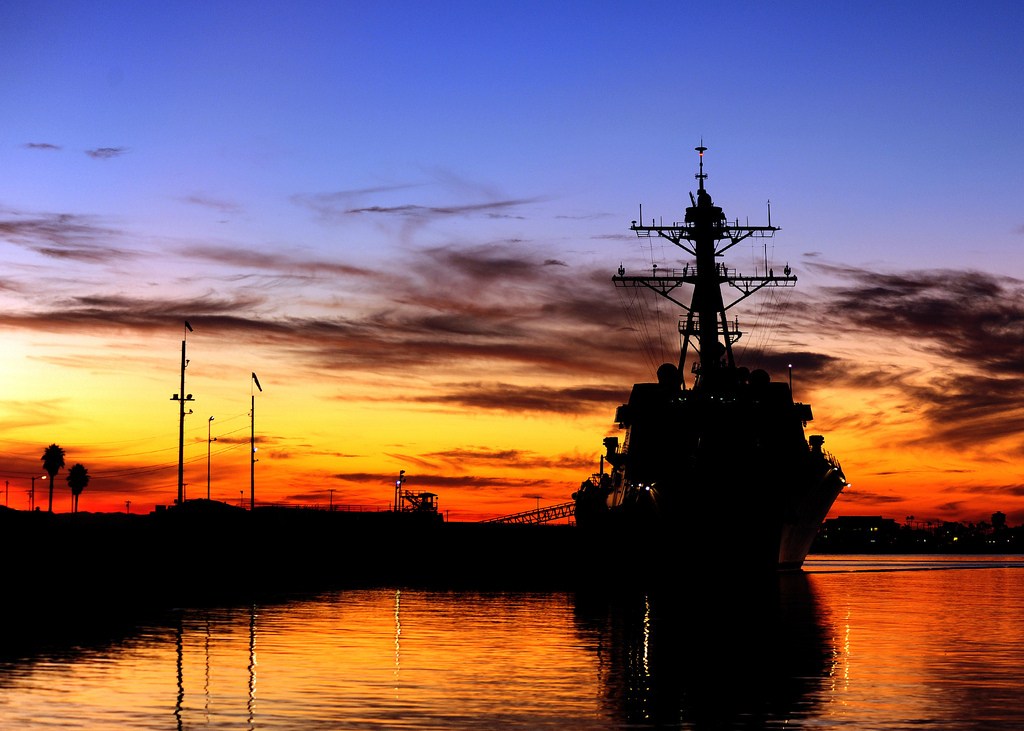
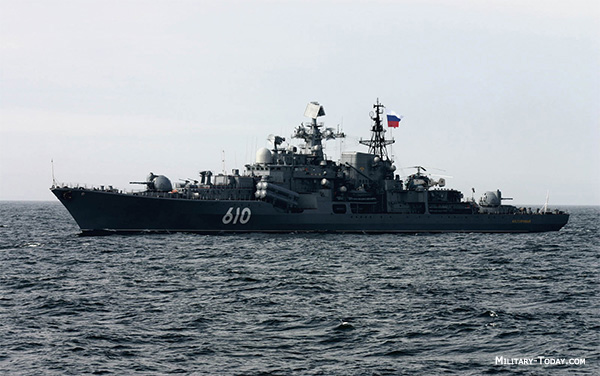
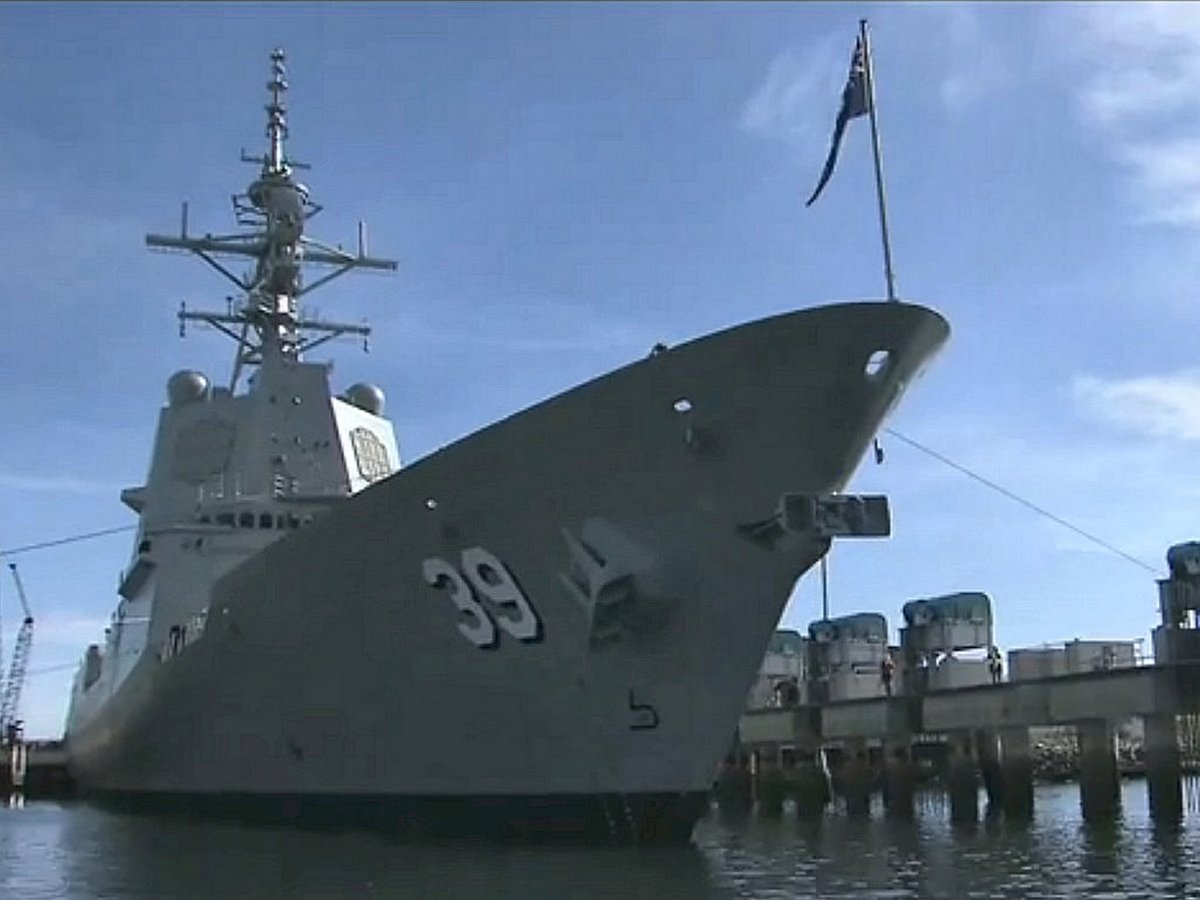

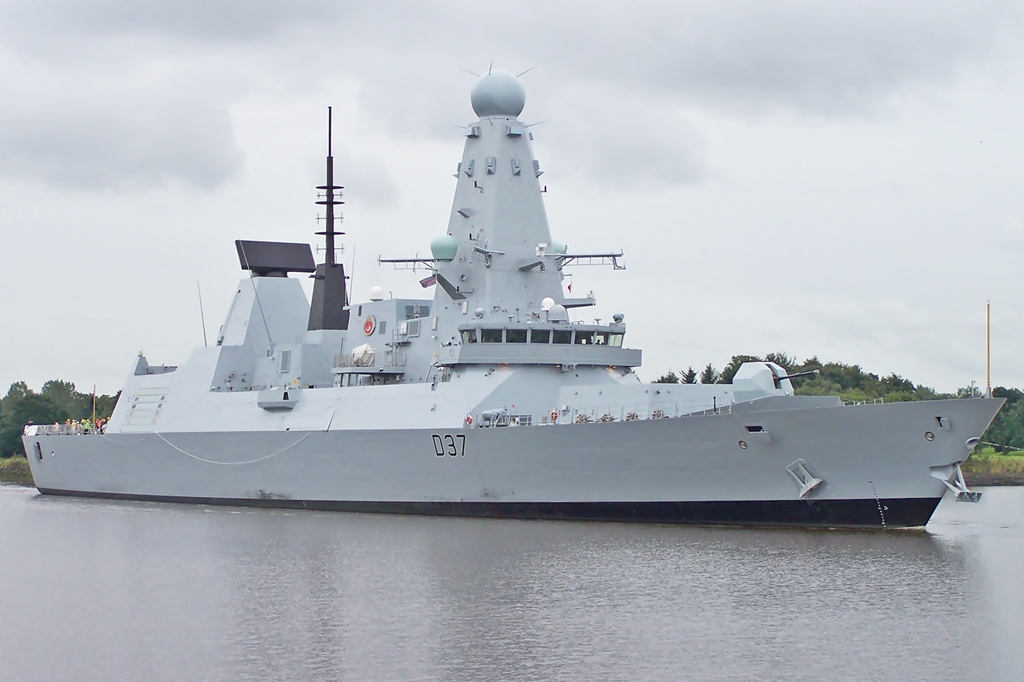

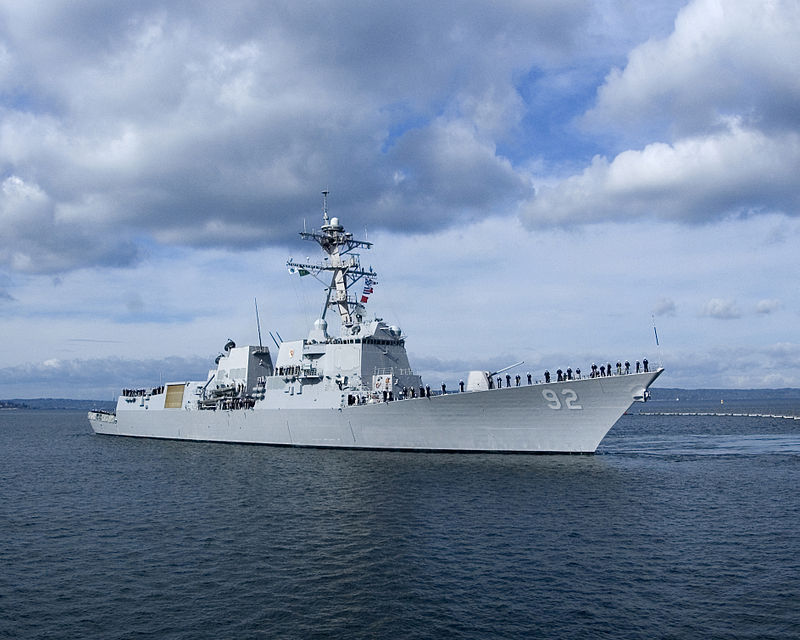
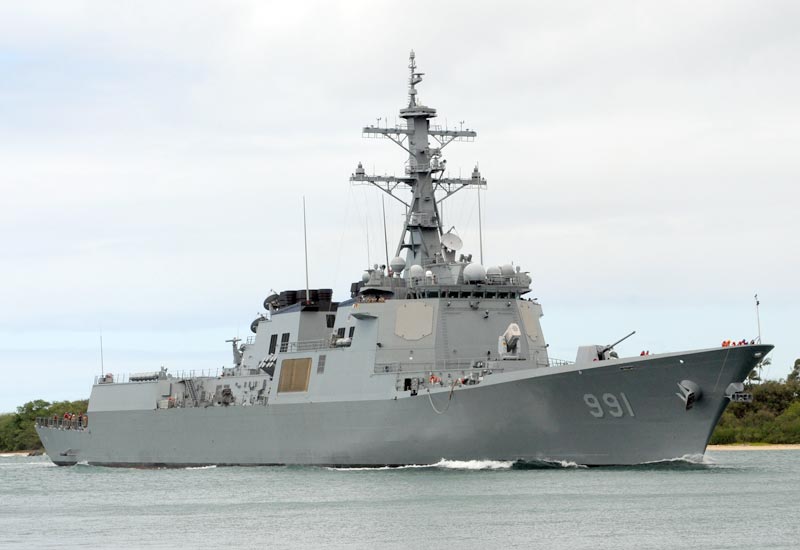
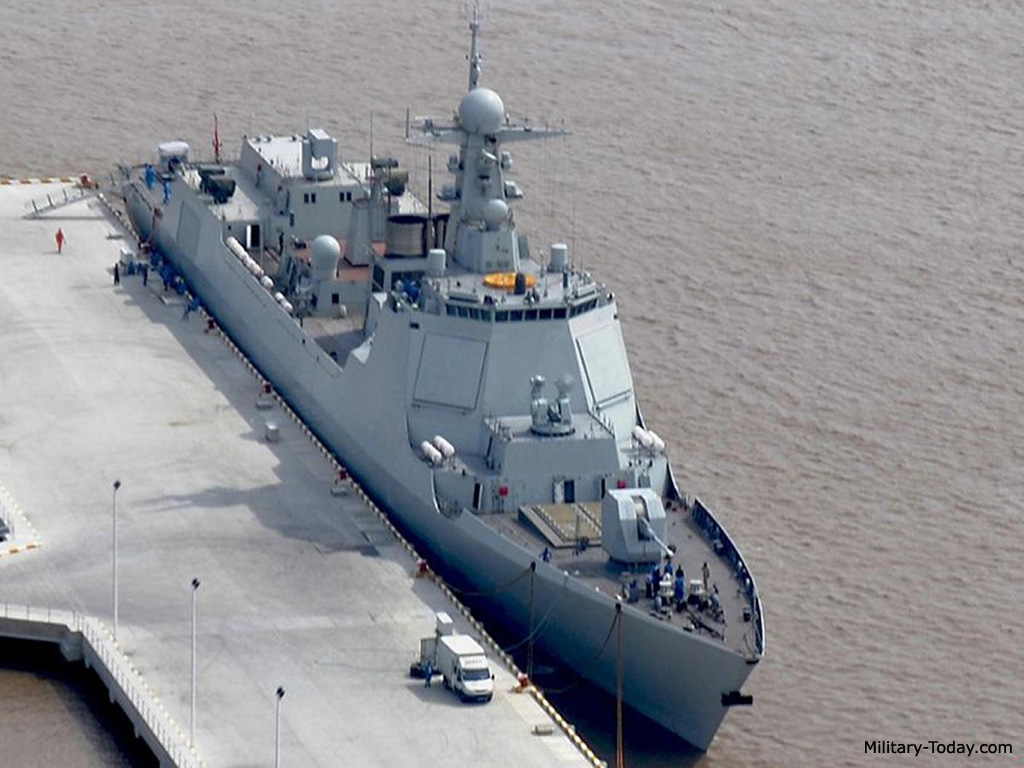
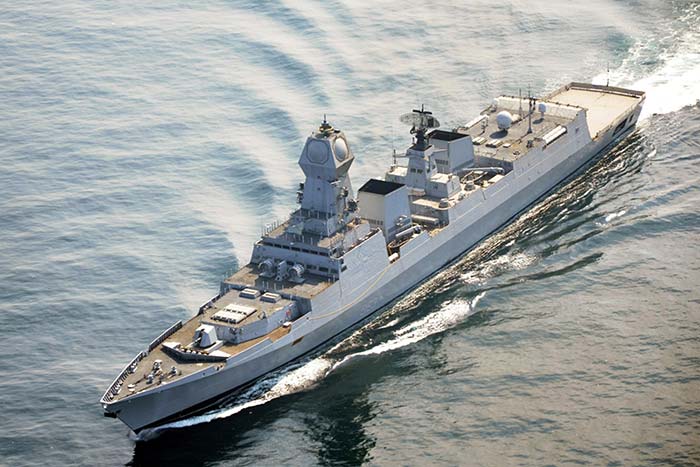
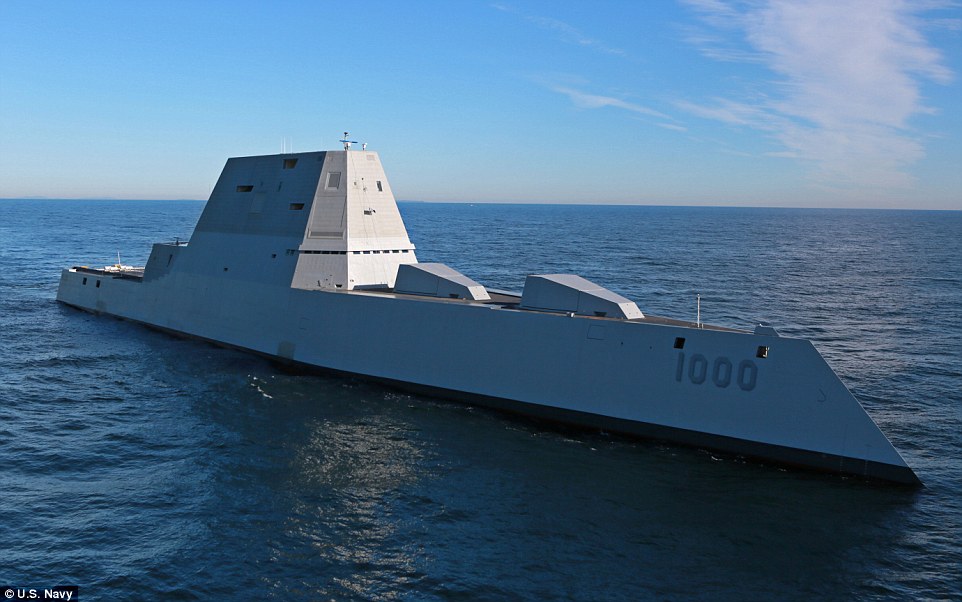
 RSS Feed
RSS Feed
